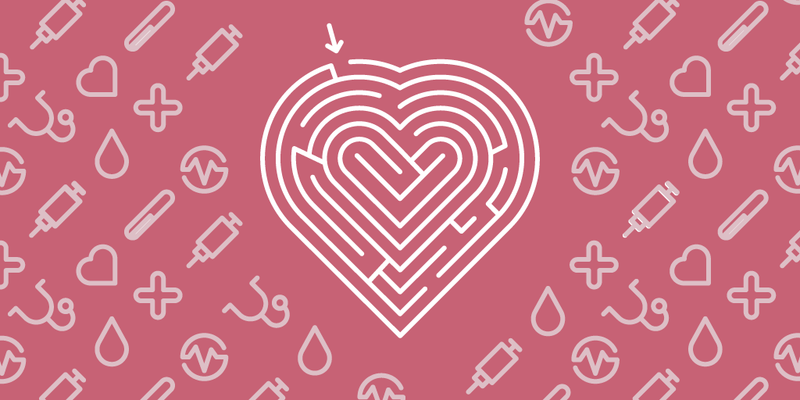Patient flow is just the way people move through a hospital or clinic. From check-in to check-out, every step matters. When the flow breaks down, wait times grow, staff feel the pressure, and patients get frustrated.
But when things move smoothly, it shows. People get seen faster. Staff can focus on care instead of managing lines. And the whole system works better. Today, a big part of fixing patient flow management is going digital.
Tools like self check-in kiosks and queue systems can help cut delays and ease the load on front desk staff.
In this guide, we’ll walk through what causes the slowdowns and how healthcare teams can fix them.
What Causes Poor Patient Flow in Healthcare Facilities?
Small disruptions in the process can pile up quickly. A late appointment here, a paperwork delay there—and soon the entire day feels backed up. Let’s look at what typically causes these slowdowns and how to fix them.
Long Wait Times and Overbooking
When appointments run late or are booked too close together, things quickly spiral. One delay pushes the next, and the waiting room starts filling up. Staff feel pressure, patients feel frustrated, and no one wins.
Gaps between appointments are too short to recover from delays
Walk-ins get added without enough structure
No buffer time to handle emergencies or last-minute changes
Reception Desk Bottlenecks
The front desk is where the day begins, and if things get stuck there, everything else runs behind. Staff juggling paper forms, calls, and check-ins slow down the line. Patients notice, and so does the rest of the care team.
Too many steps just to get someone checked in
One visitor takes time away from helping the next
Crowding at the entrance adds to the stress
Disorganized Patient Handoffs
Once a patient is checked in, they move through several touchpoints. If departments aren’t aligned, things fall through. Small missteps lead to repeated questions, unnecessary waits, or even missed care.
No clear view of where each patient is in their journey
Updates don’t always reach the right person in time
Delays between steps go unnoticed until someone complains
You might also like - Why Hospital Wait Times Are So Long
How to Improve Patient Flow in Clinics & Healthcare
There’s no quick fix to hospital patient flow, but small, targeted changes can make a big difference. The goal is to keep things moving without making patients feel rushed or overlooked. These strategies will show us how to improve patient flow in clinics and healthcare:
1. Use Self-Check-In Kiosks to Keep the Line Moving
Most delays start at the front. When people aren’t sure where to go or have to wait just to check in, it builds up fast. A self-check-in kiosk helps fix that before it turns into a pileup. It gives every visitor a clear and fast way to get started, without waiting for someone at the desk.

This small change brings a big shift:
Patients walk in and check themselves in within seconds
Staff aren’t stuck juggling sign-ins and answering basic questions
The line moves quicker, and the waiting area stays calm
The easier it is to check in, the smoother the rest of the visit goes.
2. Deploy Real-Time Queue Management
A lot of frustration in clinics comes from not knowing what’s going on. Patients wonder how long they’ll wait. Staff can’t always see what’s piling up. Without real-time visibility, small delays keep growing.
Having a live view of the queue makes it easier for everyone. Staff can shift focus where needed, and patients feel more informed and less anxious.
Some things that help:
Central service dashboards show who’s waiting, why, and for how long
Waiting room screens give updates so patients don’t keep asking
Real-time data helps manage flow when things get busy

It’s not just about speed. It’s about clarity and keeping the process moving without confusion.
Use Proactive Communication to Manage Expectations
Silence causes stress. If patients are left waiting with no updates, they start feeling ignored. Some might even leave. Others get frustrated, which puts pressure on staff.
Small updates go a long way. Just letting someone know their place in line or how long the wait is helps them stay calm.
Here’s how to make it easier:
Send automatic SMS updates when delays happen
Use two-way customer messaging so patients can reply if needed
Keep the queue visible so no one feels forgotten

An appointment scheduling software handles all of this in the background. It keeps everyone informed without adding extra work for staff.
Track Performance and Set Operational Goals
If you don’t track it, you can’t improve it. Hospital patient flow isn’t just about who gets seen first. It’s also about how long people wait, where delays happen, and why.
When clinics track these patterns, it’s easier to spot weak points. It also helps teams set better goals.
Some of the most helpful metrics include:
Average visit time and wait time
Number of visits handled each day
Staff performance and workload trends
Real feedback from patients on their experience
Qminder’s service intelligence pulls all of this into simple dashboards. It gives your team the clarity they need to fix problems early and improve care with confidence.

Automate Check-In to Reduce Delays and No-Shows
Waiting lines often start at the front desk. Paper forms. Repeated questions. Slow data entry. It all takes time, and patients notice.
A digital patient check-in system speeds this up. It gives patients a simple way to sign in, either from home or at a kiosk. The process is faster, cleaner, and less stressful for everyone.
A few key benefits:
Cuts check-in time by half
Fewer no-shows and missed appointments
Less paperwork for staff to deal with
Smoother experience from the very first step
A visit planner lets patients check in before they walk in. That means fewer delays and more time spent where it actually matters—on care.
Helpful read - 9 Best Strategies to Reduce No-Shows
Empower Patients and Improve Satisfaction
People feel more at ease when they know what to expect. That’s where digital tools make a difference. They let patients check in on their own, track their spot in line, and get updates without asking.
This kind of control makes the wait feel shorter and the experience less frustrating. It also takes pressure off your staff.
Some key results:
Better communication with fewer complaints
More trust in the system
Patients feel seen, not just managed
See also - How to Improve Patient Satisfaction in Hospitals
Lighten Staff Workload and Enable Scale
When front-desk teams get overwhelmed, the whole system slows down. A big part of that pressure comes from routine tasks that repeat all day long. Digital check-in with website and queue tools take that load off.
Less time spent on paperwork means more focus on care and patient interaction.
Here’s what that leads to:
Fewer bottlenecks during busy hours
Less burnout from constant multitasking
Easier to handle higher visitor volumes without adding staff
A queue management system helps automate these steps so your team can do more with less. It’s how clinics scale without compromising service.
Real Results from a Leading Healthcare Provider
How St. John’s Medical Center Fixed Healthcare Patient Flow with Qminder
St. John’s Medical Center had a clear goal—make the patient experience smoother. With over 150 visitors a day, the front desk was overwhelmed. Staff had to manage check-ins, answer wait time questions, and juggle a high number of incoming patients, all while trying to stay organized.
Patients were filling out forms by hand and waiting around without much direction. Many asked how long it would take, but the staff didn’t always have a clear answer.
That’s when the team decided to look for a better way.
Moving from chaos to clarity
They introduced Qminder to take the pressure off the front desk. Visitors now sign in using digital kiosks, picking their reason for the visit and heading to the right area. It’s faster, cleaner, and a lot more patient-friendly.
Average wait time dropped to under three minutes.
Key improvements after switching to Qminder:
Faster sign-in: No more filling forms at the counter. Patients check themselves in right away.
Real-time visibility: Staff can see who’s waiting, why they’re here, and what comes next.
Less crowding, more freedom: Patients get text updates. They can grab a coffee or stretch their legs without missing their turn.
Better flow between departments: If someone needs to go from billing to labs, they’re forwarded in the system. No extra check-in.
Small changes, big impact
St. John’s didn’t just want to fix wait times. They wanted to give every visitor a better experience. Qminder helped them do both.
Now, staff don’t need to guess who’s next. Managers get useful insights from the data. And patients spend less time waiting and more time getting the care they came for.
Optimize Patient Flow With Queue Management Software
Patient flow management doesn’t always mean big changes. It starts with fixing small delays, helping people move through your clinic without confusion or long waits.
When the flow works, your staff can focus better, and patients leave more satisfied. Tools like Qminder help you run things smoother by cutting down on check-in delays, keeping queues clear, and giving real-time visibility to your team.
If you want fewer bottlenecks and more control over your patient journey, Qminder is built for that.
Try it out and see the difference. Book your demo today.
Patient flow is the way patients transition through each element of the care delivery system. Patient throughput looks at how efficiently the patient moves through each element based on time & volume. They are interrelated, but throughput is based on operational measures.
Hospitals can manage fluctuations in patient volume by using digital queuing processes, breaking up available appointment times, and/or modelling on data driven predictive models to get a better idea of high volume times. These models allow hospitals to address patient needs in an effective manner while optimizing the use of hospital assets without building.
Staff training allows staff to work with digital tools, creates smooth hand offs, and facilitates working with the patient collaboratively. Trained teams reduce delays and collaborate to enhance staff coordination. After a day’s training event, even during a historical peak, coordinated flow is indistinguishable.




![10+ Best Waitlist App and Software [Updated 2025]](/static/img/cms-blog/6wb7I1FIB5vRxQ1JsrOAiE/best-waiting-line-management-software.jpg)

